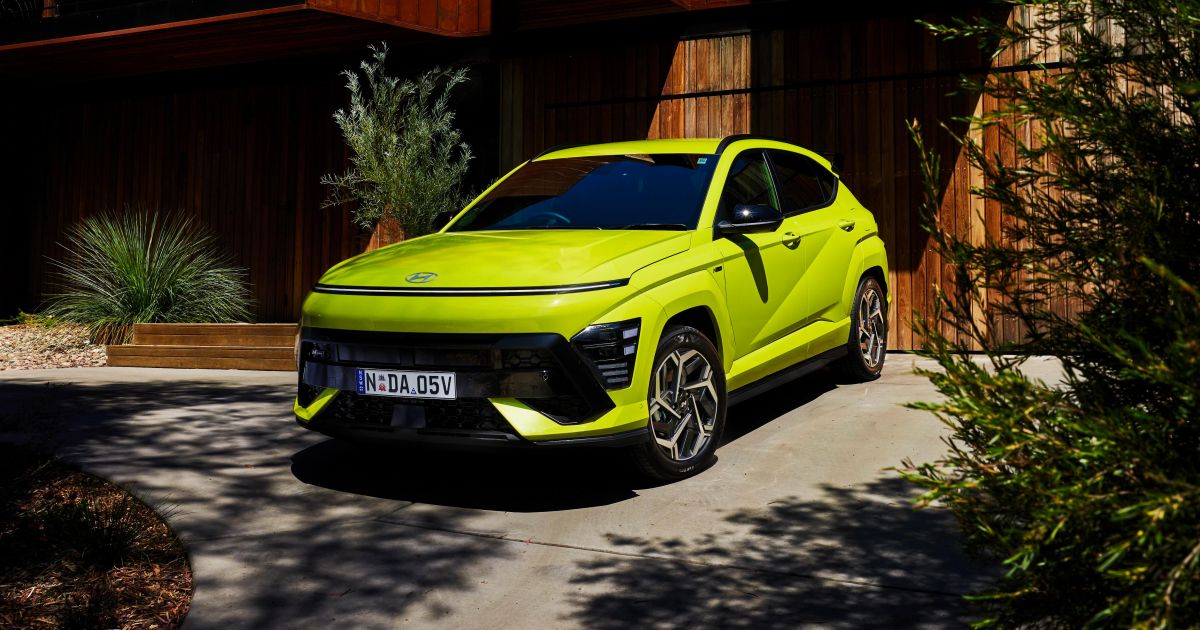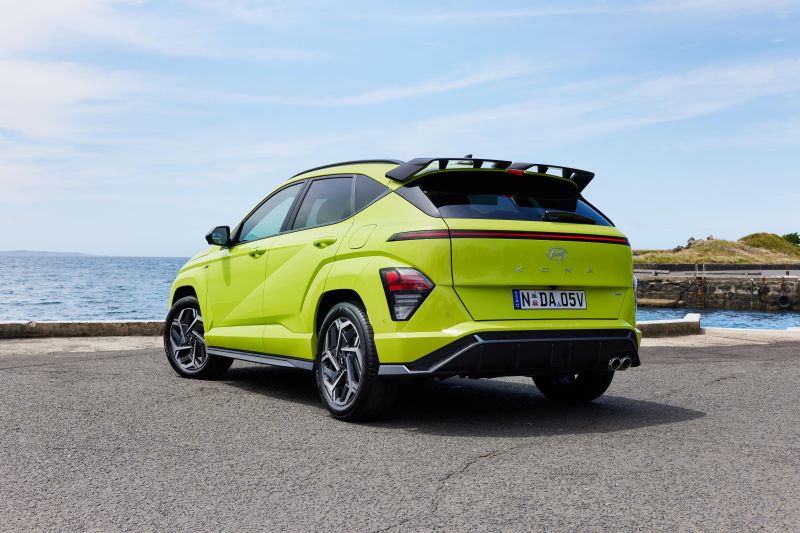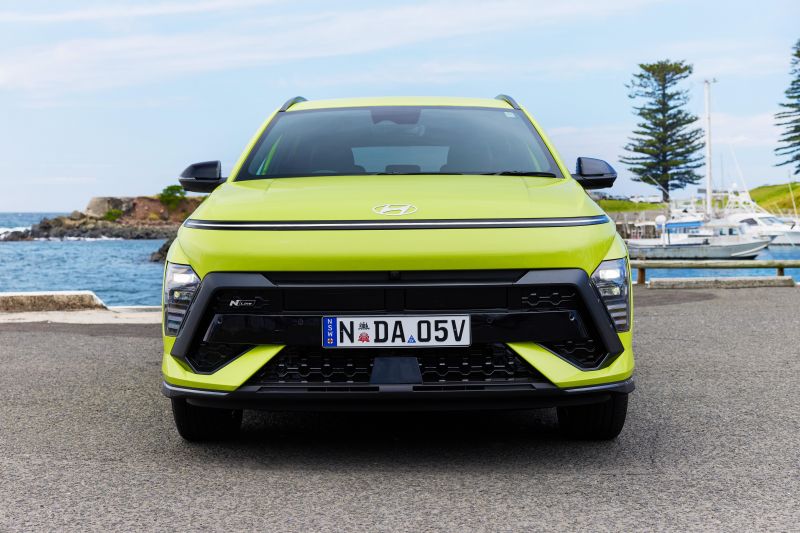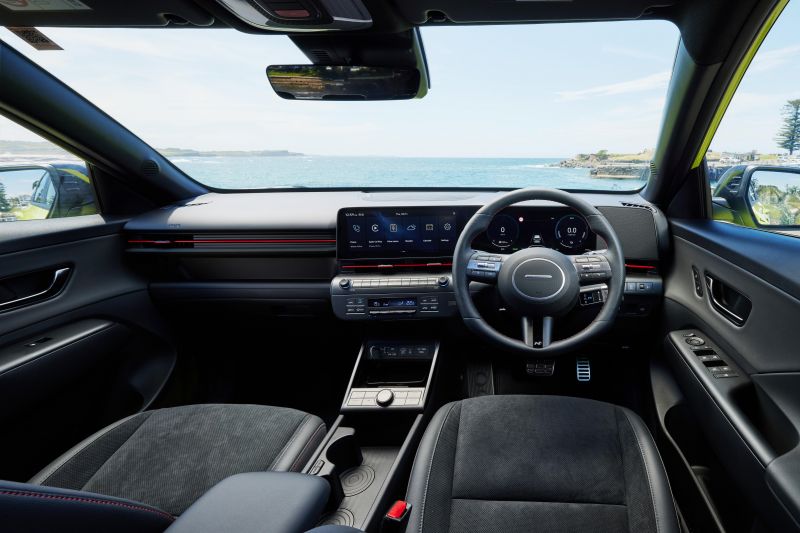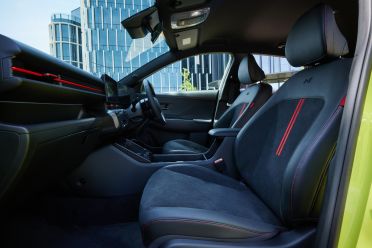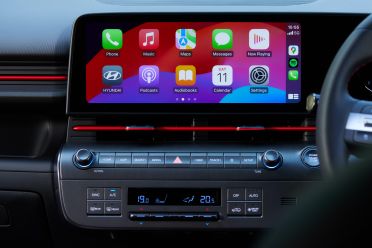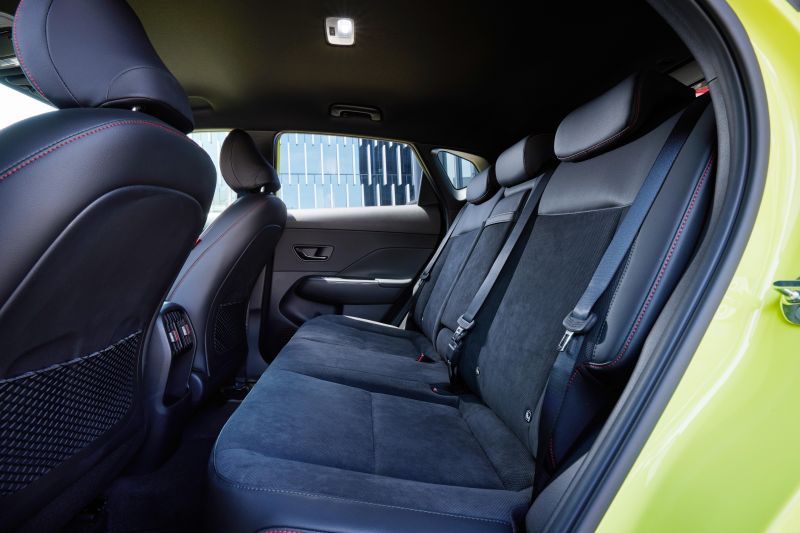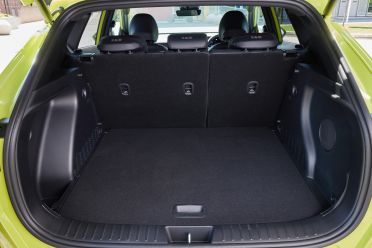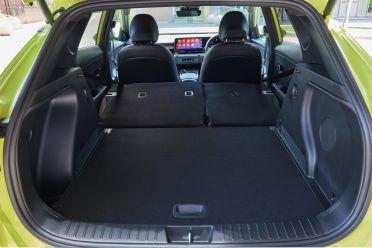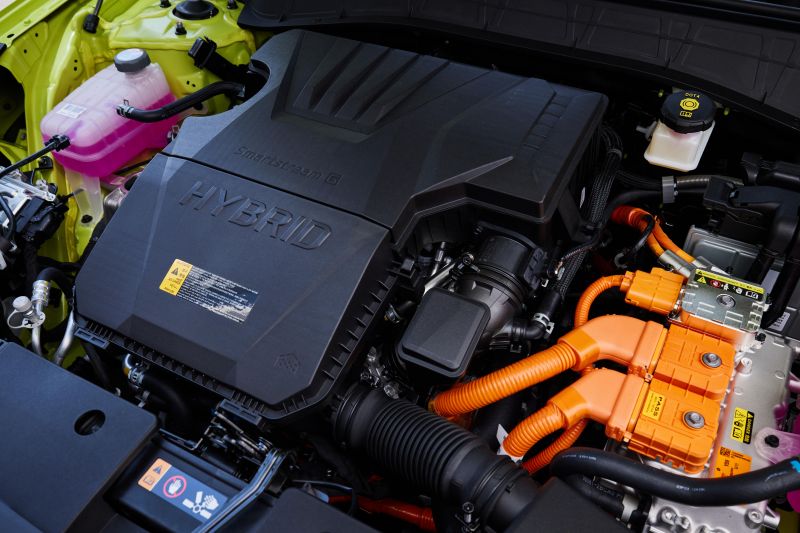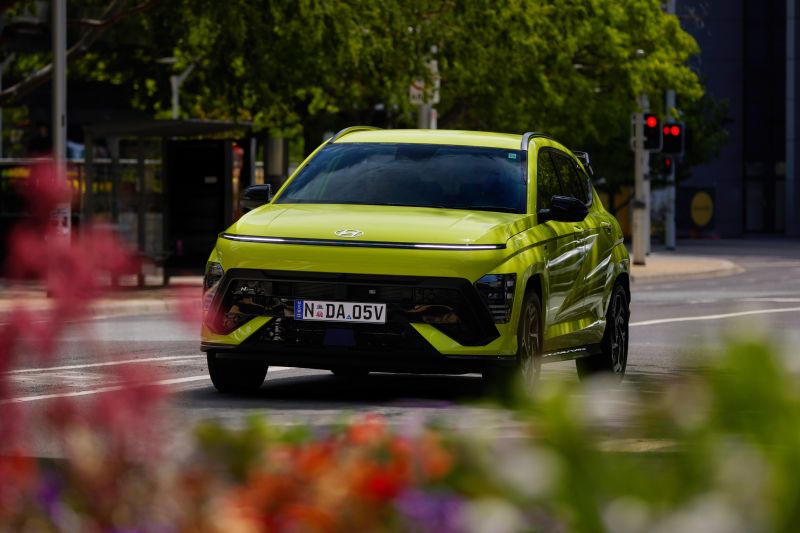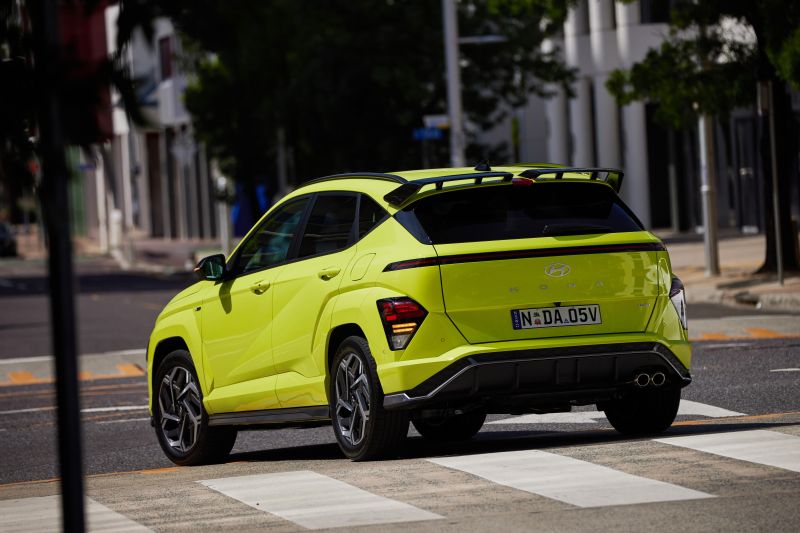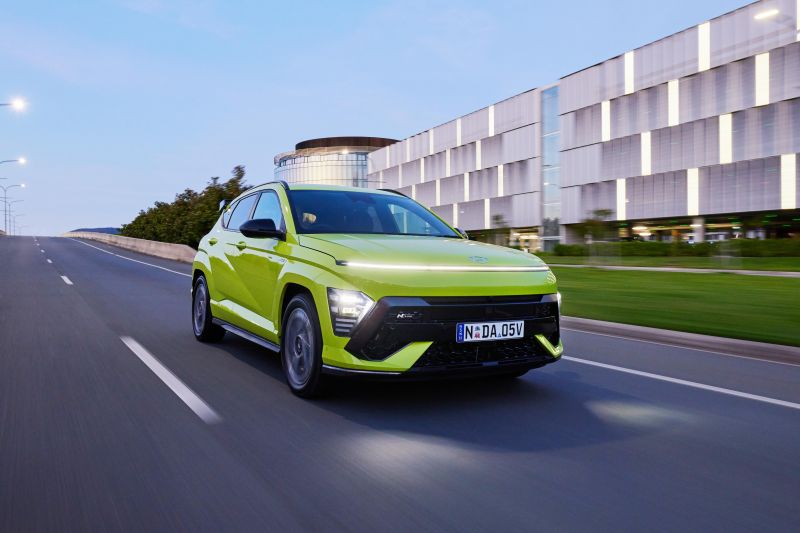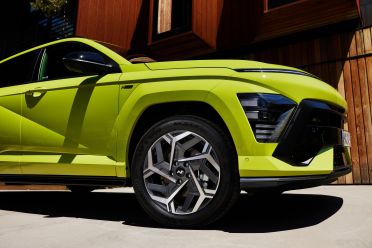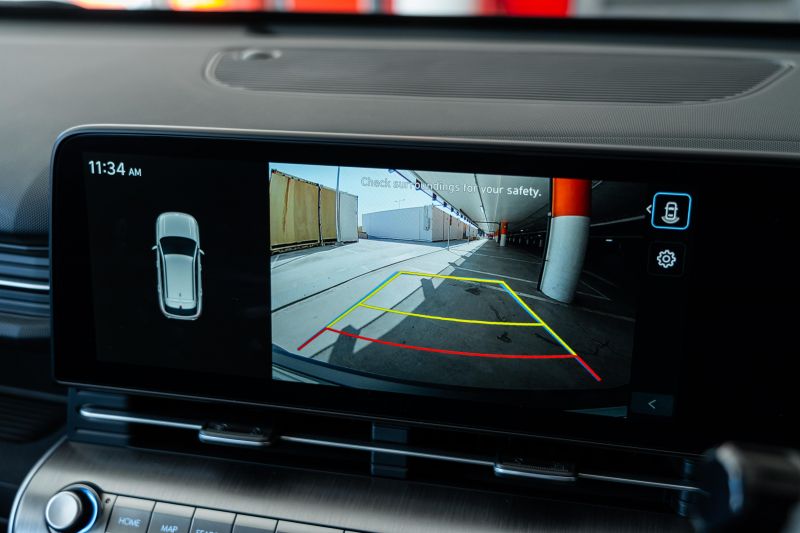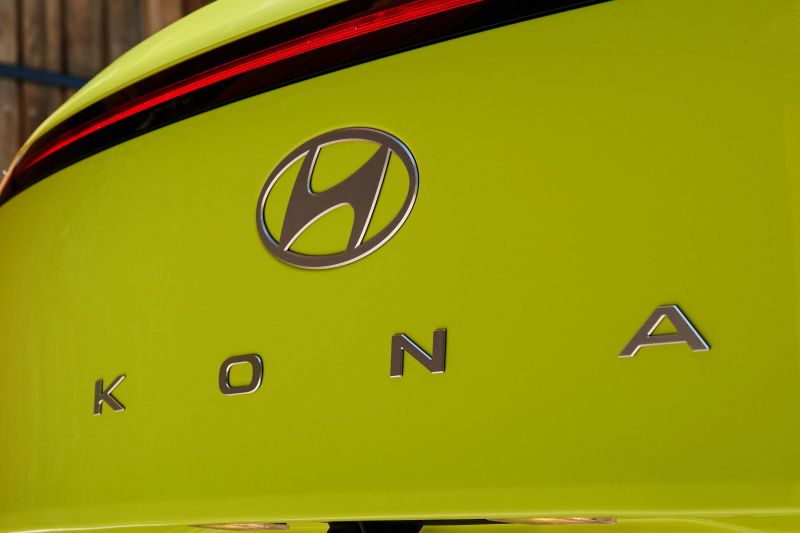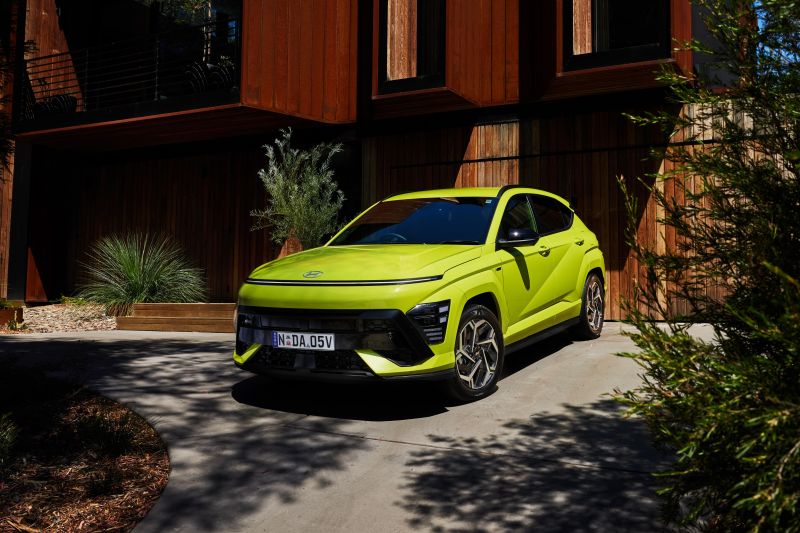The new Hyundai Kona comes with one of the biggest range of drivetrains on the market including petrol and electric, plus the hybrid option now being offered in Australia for the first time.
The hybrid, driven here, has a real opportunity to conquest sales from Toyota, the longstanding force in the petrol-electric market. While EV sales are spiking, hybrids are still a winning middle ground.
Compared to the outgoing Kona, this new model also offers more interior space, placing it more neatly between the smaller Venue and larger Tucson in the Hyundai SUV range.
It also offers sharper design, lots of slashes and edges, and an EV-like front with full-width light bar. With optional Neoteric Yellow paint and the sporty N Line options pack, it stands out.
Natural hybrid competitors include the Toyota Corolla Cross and C-HR, Subaru Crosstrek, Honda HR-V, and GWM Haval Jolion. You can throw in the Mazda CX-30 and Kia Seltos range too, though neither offers electrification.
From left field there’s the all-electric BYD Atto 3 and MG ZS, which offer more battery for similar money.
How does the Hyundai Kona fare vs its competitors?
View a detailed breakdown of the Hyundai Kona against similarly sized vehicles.

Hyundai
Kona
How much does the Hyundai Kona cost?
There are two spec levels called Kona and Kona Premium, both of which can be optioned with the N Line pack for a sportier look and feel.
The base naturally aspirated petrol and hybrid drivetrains are both available across all three variations, but the turbocharged-petrol AWD option only comes with the N Line box ticked. The hybrid costs $4000 more than the base 2.0-litre petrol version.
2023 Hyundai Kona Hybrid pricing:
- Kona Hybrid: $36,000
- Kona N Line Hybrid: $40,000
- Kona Premium Hybrid: $43,500
- Kona Premium N Line Hybrid: $46,500
Key rivals include:
- Toyota Corolla Cross GXL Hybrid: $40,230
- Subaru Crosstrek Hybrid L: $38,590
- Honda HR-V e:HEV L: $47,000 D/A
- Haval Jolion Ultra HEV: $40,990 D/A
- MG ZS EV Excite: $44,000 D/A
- BYD Atto 3 Standard Range: $48,011
Prices exclude on-road costs unless specified
What is the Hyundai Kona like on the inside?
The new Kona’s interior strikes the right notes when it comes to interior technologies and storage.
The N Line package brings nice Alcantara and leather seats, and a sporty looking steering wheel with perforated leather hand grips and red stitching. There are also brash red trim inserts on the dash to complete the look.
There aren’t any real ergonomic quirks with the singular exception of the transmission shifter on the steering column by your right knee, quite close to the indicator stalk. You twist the end forwards for drive and backwards for reverse.
The upside is a liberation of space along the centre tunnel, which offers a big storage tub instead, with enough room for a handbag, laptop or bottle of wine laying flat. Ahead of this is a separate wireless charging pad.
A large slightly curved panoramic touch display spans more than half the width of the dash, and puts the instruments and multimedia in the same bit of hardware.
The driver’s instruments comprise a digital speedometer and tachometer, trip data, a live animation of the hybrid drivetrain system, and a tyre pressure monitor. You can choose between Classic and Simple displays, and three graphics styles. Short and sweet.
The centre 12.3-inch touchscreen is excellent, with wireless Android Auto and Apple CarPlay that re-pairs rapidly and offers voice controls, simple interfaces and sharp graphics, and good processing speeds.
If you want satellite navigation, split-screen capability and a 360-degree camera you’ll need to upgrade to the Kona Premium, however.
Hyundai says the infotainment has been designed to receive over-the-air updates, so it shouldn’t date too quickly. You can also pair your car to the Hyundai Bluelink app, which can remotely unlock or lock the car, start it, and shows you the vehicle’s travel data and location.
To its credit Hyundai is one brand that has resisted the temptation to put every feature behind a haptic pad or touchscreen. It’s retained a lot of buttons, dials and switches for multimedia and climate controls. No alternative beats tactile controls.
In terms of quality and trim the Kona is a mixed bag. There’s the usual use of cheap plastics here and there but there’s also some quite tasteful trim along the dash and for the seats. It’s all well put-together.
The new Kona is more spacious in the back seats and boot than the old model. Specifically it offers an additional 77mm of rear legroom, 17mm of shoulder room, and 11mm of headroom, and the seats tilt back up to 32 degrees.
My 194cm frame had enough legroom and headroom in the rear, which comes with two rear USB-C ports, air vents and a centre cupholder armrest. While it’s no Tucson in terms of family friendliness, it’s much more practical than it was.
The boot now measures a quite capacious 407 litres, and unlike most hybrids Hyundai actually includes a spare tyre rather than a repair kit. It’s a slim space-saver, but that’s better than not having one.
The boot floor now measures 867mm long (up 172mm), 1042mm wide (up 76mm) and 719mm tall (up 187mm), though the floor is about level with the rear bumper lip.
What’s under the bonnet?
The drivetrain pairs a 1.6-litre naturally aspirated petrol engine with an electric motor for combined peak outputs of 104kW and 265Nm – almost 50 per cent more torque than the base petrol.
The drive motor which powers the car at low speeds and again when coasting, is powered by a small 240V lithium-ion battery recharged by regenerative braking and the engine, mounted under the back seat.
The transmission is a six-speed dry clutch DCT automatic smoothed out by motor assistance, while all variants are front-wheel drive. There are also four levels of brake-energy recuperation controlled by paddle shifters.
Hyundai claims fuel economy on the combined cycle of just 3.9 litres per 100km and CO2 emissions of 89 grams per 100km. In urban driving the hybrid is about 50 per cent more efficient than the base petrol.
This means that even with a small 38L fuel tank the average commuter should get two or three weeks of driving from a tank if they match the claim, and more helpful still it’s rated to run on 91 RON petrol.
Braked towing capacity is 1300kg.
How does the Hyundai Kona drive?
The first thing you notice about driving the Kona Hybrid is the shift-by-wire transmission controller on the steering column, which gives it a bit of an EV feel.
Like all hybrids it’s at its best in urban, stop-start sorts of driving, where you can really squeeze the most out of the small electric motor and recuperate energy – just pull the left paddle shifter and the vehicle will crawl to a halt without brakes.
Indeed you find yourself regularly driving as an EV mode, when taking off, driving gently up to 40km/h, and when lifting off-throttle at speed and coasting.
When you do need petrol power, the engine kicks in quietly and smoothly. The e-motor adds a hit of low-down torque and smooths out any jerkiness from the DCT, which in turn has slick and smooth shifts under engine power.
Don’t bank on always matching the 3.9L/100km fuel claim however. I was able to match that on some commutes, but over the 800km I covered, the average was 5.0L/100km. In fact, over the full life of the vehicle it’s averaged 5.1L/100km. That means $20 should get you at least 200km of driving.
If you twist the dial on the centre tunnel, you’ll engage Sport mode. This adds some pep into your step via throttle mapping, and the paddle shifters change gears rather than modulate brake energy regeneration.
Is it massively punchy? No, as evidenced by highway overtaking. But the Toyota Corolla Hybrid is slow and it hasn’t stopped take-up.
The Kona offers pretty well-sorted dynamics, with responsive electric steering and good body control in corners, plus composed ride quality over patchy road surfaces.
It upgrades to independent suspension at both ends, axing the base petrol model’s rear torsion beam. It also has a feature than both brakes the inside wheel and powers the outside, to sharpen up your cornering lines and banish understeer if you come in too hot – kind of matches the sporty design.
One aspect that could be better is tyre noise suppression on coarse-chip highway tarmac. It’s not the worst, but nor is it the best.
There’s one major annoyance however. The driver-assist systems.
The adaptive cruise control and the lane-keeping aid with steering assist work well, no issues there. But the camera-based driver-monitoring system would beep endlessly even if I was paying attention, and the speed-limit assist system gets very angry if you inadvertently creep over the limit, even briefly.
It’s not that these features are bad idea, it’s that they need calibration. Driving along in a car chiming at you for hard-to-discern reasons gets tedious. At the least, these features need to be simple to turn off or dial back. Instead, Hyundai makes you tap through screen menus every time you start the car.
What do you get?
Kona highlights:
- 18-inch wheels
- Space-saver spare
- LED headlights – reflector
- LED daytime running lights
- Roof rails
- Proximity sensing key
- Parking sensors
- Bluelink connected app
- Cloth seats
- Dual-zone climate control
- 12.3-inch touchscreen
- OTA compatible
- AM/FM/DAB+
- Wireless Apple CarPlay
- Wireless Android Auto
- 6-speaker audio
- Wireless charger
- 4 x USB-C ports
N Line Package adds:
- N Line 18-inch wheels
- Rain-sensing wipers
- Different bumpers, skirts, skid plates
- Black rear wing
- N badges and centre caps
- Chrome exhaust surrounds
- Leather and Alcantara interior
- Steering wheel perforated grips
- Black headlining, red trims, alloy pedals
- LED headlights – projector
- LED ‘Seamless Horizon’ front light
- LED front/rear turn signals
- 12.3-inch digital instrument cluster
- Electro-chromatic interior mirror
Kona Premium adds:
- Remote Smart Parking
- Sunroof – $1500 option
- Privacy rear glass
- Smart power tailgate
- Sat-nav with live traffic
- Bose 8-speaker audio
- Voice control
- Leather interior
- 10-way power/memory driver seat
- 8-way power passenger seat
- Heated and ventilated front seats
- Heated rear seats, steering wheel
- Ambient mood lighting
Colours (N Line):
- Atlas White: Free
- Cyber Grey: $595
- Abyss Black: $595
- Soultronic Orange: $595
- Ultimate Red: $595
Is the Hyundai Kona safe?
The current Kona is yet to receive an ANCAP safety rating.
All models come the following safety features:
- 7 airbags
- Front, front-side, curtain, front centre
- ISOFIX and top tether points
- Autonomous emergency braking
- Car, cyclist, pedestrian, junction, oncoming
- Blind-spot collision avoidance assist
- Rear cross-traffic avoidance assist
- Adaptive cruise control
- Driver attention monitor/camera
- Intelligent speed limiter
- Active lane-keeping assist
- Safe exist assist
Kona Premium adds:
- Blind-spot view camera
- Reverse parking collision avoidance
- Surround-view monitor
- Remote Smart Parking feature
How much does the Hyundai Kona cost to run?
The Kona comes with a five-year, unlimited kilometre warranty, or eight years/160,000km for the hybrid battery.
Each of the first five services (intervals of 12 months or 15,000km) is capped at $399, the same pricing as the non-hybrid.
In terms of fuel costs, it’s worth looking at whether to expect a return-on-investment for the extra upfront cost. The hybrid costs $4000 more than the non-hybrid, with the engines offering respective fuel economies of 6.6L/100km and 3.9L/100km.
This is 2.7 litres saved for every 100km driven, 27L for every 1000km, and 270L for every 10,000km. At today’s average fuel price that’s about $500 saved every 10,000km, meaning you’d pay off the $4000 cost in eight years.
Of course, if you drive in stop-start traffic a lot, or if petrol prices spike, this payback period would come at lower mileage. Throw in stronger resale and it’s a no-brainer.
CarExpert’s Take on the Hyundai Kona
The brash new model has a few overly intrusive driver aids, its origami-chic design is bound to polarise, and a punchier hybrid might be good.
But its high-tech interior comes with newfound practicality, and the ride and handling balance is good. It’s really in its element in urban congestion.
It makes sense to pay the premium for a Kona Hybrid, which will make up the difference with fuel savings and resale value down the line, and is better to drive.
Click the images for the full gallery
BUY: Hyundai Kona
MORE: Everything Hyundai Kona

